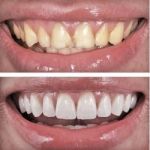What Is a Dental Emergency? Understanding and Managing Urgent Dental Situations
- 1. What Constitutes a Dental Emergency?
- 2. Common Types of Dental Emergencies
- 3. How to Handle a Dental Emergency
- 4. When to Seek Emergency Dental Care
- 5. Real-Life Examples of Dental Emergencies
- 6. Preventing Dental Emergencies
1. What Constitutes a Dental Emergency?
A dental emergency refers to any urgent dental issue that requires immediate attention to alleviate pain, stop bleeding, or prevent further damage to the teeth or gums. These situations can happen unexpectedly and can cause significant discomfort or even lead to long-term damage if not treated promptly. Whether you’re experiencing tooth pain, an injury to your mouth, or a dislodged tooth, understanding what qualifies as a dental emergency is crucial for timely care.
In general, a dental emergency includes situations that affect your teeth, gums, or jaw that cannot wait for a routine appointment. Seeking care immediately can make a significant difference in the outcome of the treatment.
2. Common Types of Dental Emergencies
Dental emergencies can take various forms, and they may require different approaches depending on the severity of the situation. Here are some of the most common dental emergencies:
- Toothache: Severe tooth pain, especially when it’s persistent and doesn’t respond to over-the-counter pain relievers, can be a sign of an infection or cavity that requires immediate treatment.
- Knocked-Out Tooth: A tooth that has been knocked out due to an accident or trauma should be treated immediately. If re-implanted within an hour, there’s a chance it can be saved.
- Fractured or Chipped Tooth: A broken or chipped tooth can cause pain, sensitivity, and even infection. It’s important to seek care to avoid further complications.
- Gum Bleeding or Infection: Unexplained bleeding, swelling, or infection in the gums can signal a serious issue, such as gum disease or an abscess, which requires immediate dental attention.
- Loose or Lost Fillings/Crowns: When a dental filling or crown falls out, it can cause discomfort or make the tooth more susceptible to infection, requiring urgent repair.
Recognizing the signs of these common dental emergencies can help you act quickly and prevent long-term damage.
3. How to Handle a Dental Emergency
Knowing how to manage a dental emergency can help minimize discomfort and prevent further complications. Here are some general guidelines for handling different types of dental emergencies:
- For Toothaches: Rinse your mouth with warm water, floss gently to remove any debris, and apply a cold compress to the outside of your cheek to reduce swelling.
- For Knocked-Out Teeth: If possible, place the tooth back into its socket. If not, keep it moist by placing it in a glass of milk or saliva and seek dental care immediately.
- For Broken Teeth: Keep any pieces of the broken tooth, rinse your mouth with warm water, and apply a cold compress to reduce swelling. Visit your dentist as soon as possible.
- For Gum Bleeding: Apply pressure with a clean cloth or gauze. If the bleeding continues, seek professional dental care to rule out infections or underlying conditions.
In any case, it's crucial to stay calm and contact your dentist or visit an emergency dental care facility as soon as possible for appropriate treatment.
4. When to Seek Emergency Dental Care
While some dental issues can wait until regular office hours, certain situations require immediate attention. You should seek emergency dental care if you experience any of the following:
- Severe pain: Intense, persistent pain that doesn’t improve with over-the-counter pain relief can be a sign of infection or other serious dental issues.
- Heavy bleeding: If you have uncontrollable bleeding from a tooth or the gums, immediate care is necessary to prevent complications.
- Visible damage: If your tooth is fractured, broken, or knocked out, you need to see a dentist urgently to increase the chances of saving the tooth.
- Swelling or fever: Swelling in the mouth or face, along with a fever, may indicate an infection that needs to be treated right away.
If any of these situations occur, it’s best to seek emergency dental care as soon as possible to avoid further damage or complications.
5. Real-Life Examples of Dental Emergencies
One of the most notable examples of a dental emergency is the case of UFC fighter Nate Diaz, who experienced a serious gum infection that required emergency surgery before a fight. This situation highlights the importance of addressing dental issues quickly, as delaying treatment could lead to more severe complications.
Another example is a patient who was involved in a car accident and knocked out several teeth. Immediate dental intervention allowed the teeth to be re-implanted successfully, saving the smile and preventing further oral health issues.
6. Preventing Dental Emergencies
While you can’t always avoid dental emergencies, there are steps you can take to reduce the risk:
- Wear a mouthguard: If you play contact sports or grind your teeth at night, a mouthguard can help protect your teeth from trauma.
- Practice good oral hygiene: Brush and floss regularly to prevent cavities, gum disease, and other dental issues that could lead to an emergency.
- Visit your dentist regularly: Regular dental check-ups allow your dentist to catch potential problems early and prevent them from turning into emergencies.
By taking these preventative measures, you can reduce the chances of facing a dental emergency.
For more information or to get help with a dental issue, visit Dentistry Toothtruth for expert advice and resources on dental care.







 Jody B Vance, DDS, MS, PC4.0 (119 review)
Jody B Vance, DDS, MS, PC4.0 (119 review) Community Health Centers4.0 (206 review)
Community Health Centers4.0 (206 review) Dental Smiles of Joliet4.0 (268 review)
Dental Smiles of Joliet4.0 (268 review) Equitas Health Short North Medical Center3.0 (96 review)
Equitas Health Short North Medical Center3.0 (96 review) Riverside Tooth Co.5.0 (276 review)
Riverside Tooth Co.5.0 (276 review) Madison Dental Arts5.0 (19 review)
Madison Dental Arts5.0 (19 review) The Importance of Oral Health Education During Pregnancy for a Healthy Pregnancy
The Importance of Oral Health Education During Pregnancy for a Healthy Pregnancy Best Tips for Brushing Your Teeth Properly for Healthy Gums: Essential Techniques for Oral Health
Best Tips for Brushing Your Teeth Properly for Healthy Gums: Essential Techniques for Oral Health Why Skipping Dental Checkups Can Lead to Bigger Oral Health Problems
Why Skipping Dental Checkups Can Lead to Bigger Oral Health Problems Advantages of Porcelain Dental Restorations
Advantages of Porcelain Dental Restorations How Can Diabetes Cause Tooth and Gum Problems? Preventing and Managing Oral Health Issues
How Can Diabetes Cause Tooth and Gum Problems? Preventing and Managing Oral Health Issues Healthy Habits for Promoting Good Oral Health and Hygiene: Tips for a Healthy Smile
Healthy Habits for Promoting Good Oral Health and Hygiene: Tips for a Healthy Smile